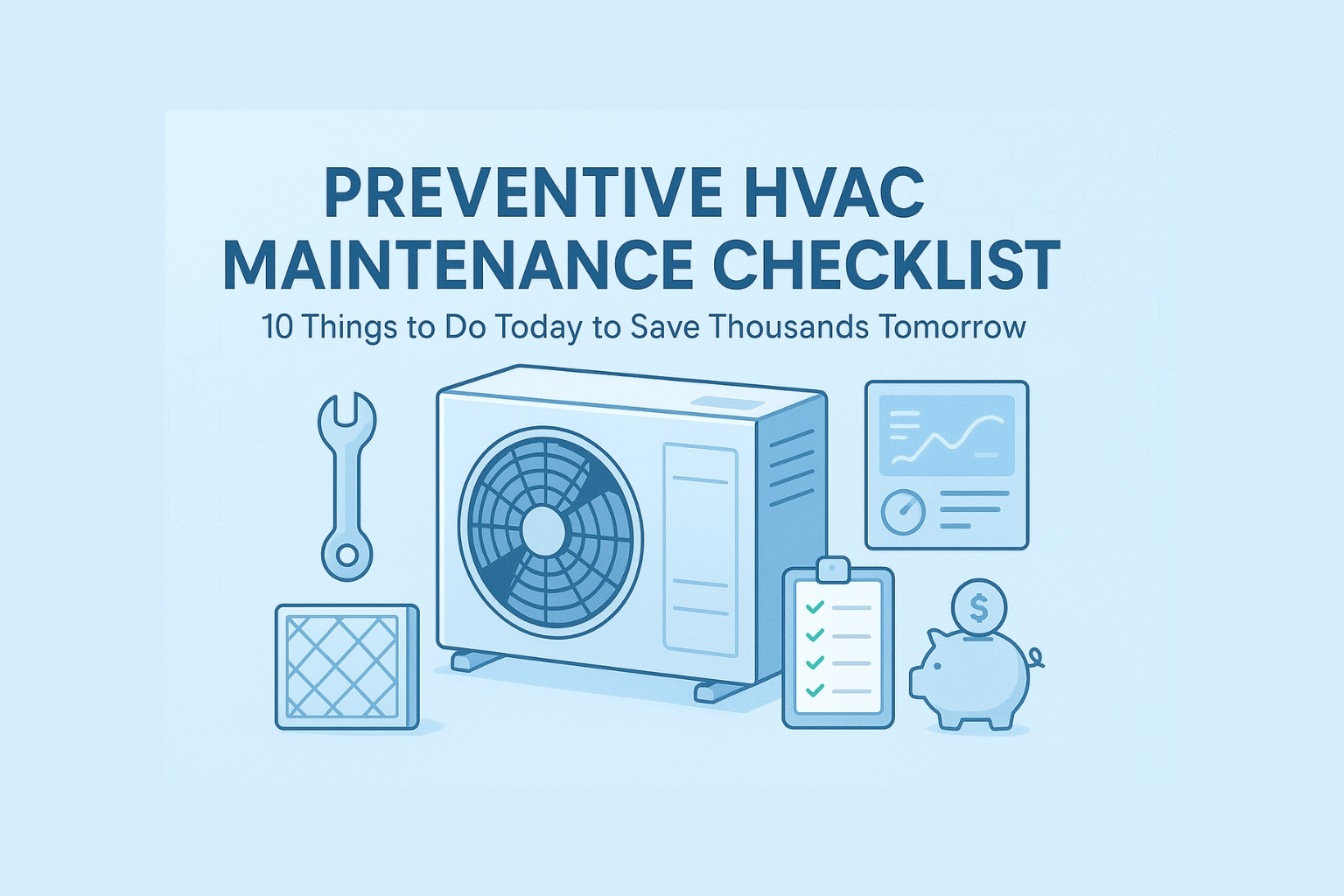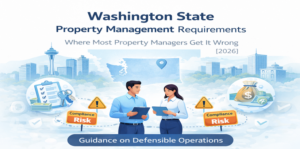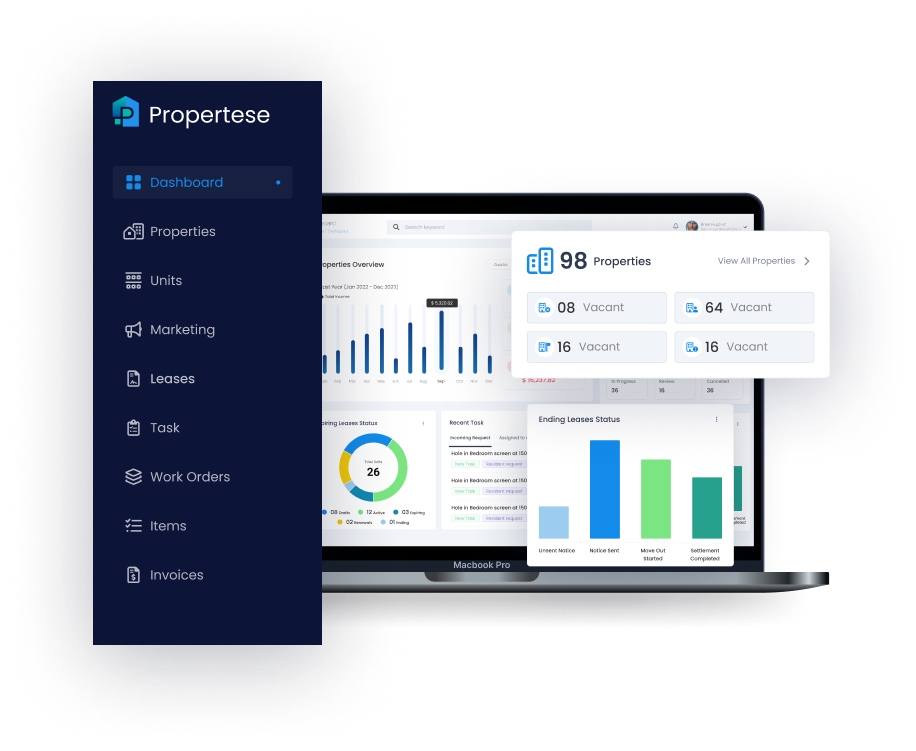
Picture this: It’s the hottest day of summer, your tenants are calling nonstop about broken AC units, and you’re staring at a $15,000 emergency repair bill that could have been avoided with a simple $200 maintenance check. Sound familiar?
HVAC emergencies don’t just cost money; they cost tenant satisfaction, your reputation, and countless sleepless nights. But here’s the good news: preventive HVAC maintenance can reduce the risk of breakdowns by up to 95% and save you 10-30% on energy costs annually.
At Propertese, we’ve worked with property managers all over the world, and one thing’s clear:
- Keeping HVAC systems in top shape can save a lot of headaches.
- A good preventative maintenance checklist doesn’t just keep things running; it turns last-minute breakdowns into smooth, predictable operations.
- In this blog, we’re sharing the same 10-step checklist our most successful clients use to keep their HVAC systems working year-round.
Why Preventive HVAC Maintenance Is Your Secret Weapon
Before we dive into the checklist, let’s talk numbers that’ll make your CFO smile:
- Energy savings: The U.S. Department of Energy estimates that organizations can achieve 5-20% annual energy savings through proper operations and maintenance practices
- Cost reduction: Comprehensive planned maintenance programs result in 50% reduction in total maintenance costs compared to reactive approaches
- ROI of 545%: A Jones Lang LaSalle study with a major telecommunications firm found that preventive maintenance resulted in a 545% return on investment
- Reduced repair costs: Studies show that emergency repairs consistently cost significantly more than planned maintenance, making prevention a smart financial strategy
Your Complete Preventive HVAC Maintenance Checklist: 10 Essential Tasks
1. Check and Replace Air Filters (Monthly Priority #1)
Why it matters: Dirty filters are the #1 cause of HVAC inefficiency and premature equipment failure.
What to do:
- Inspect filters by shining a flashlight through them. If you can’t see light, replace them immediately
- Replace filters every 1-3 months, or more frequently in dusty environments
- Use MERV-13 or higher filters for better air quality
- Document replacement dates for each unit
Pro tip: Set up automated reminders in your property management system. Many modern property management platforms can track maintenance schedules across all your properties, ensuring nothing falls through the cracks. For example, Propertese’s maintenance management features help property managers automate HVAC maintenance scheduling and track completion across their entire portfolio.
2. Clean Evaporator and Condenser Coils (Quarterly)
Why it matters: Dirty coils can reduce system efficiency by up to 20% and increase operating costs significantly.
What to do:
- Shut off the power to the unit
- Remove debris around outdoor units (at least 2 feet clearance)
- Use coil cleaner or mild detergent for thorough cleaning
- Check for fin damage and straighten if necessary
- Schedule professional deep cleaning quarterly
Red flag: If coils are freezing up regularly, you likely have airflow issues or refrigerant problems that need immediate professional attention.
3. Inspect and Clear Condensate Drains
Why it matters: Blocked drains can cause water damage, mold growth, and system shutdowns.
What to do:
- Check drain pans for standing water
- Pour a cup of water into the drain to test flow
- Use a wet/dry vacuum to clear blockages
- Add drain pan tablets to prevent algae growth
- Ensure proper drainage away from the building
Tech upgrade: Consider installing condensate overflow switches that automatically shut down the system if drains back up, preventing costly water damage.
4. Test and Calibrate Thermostats
Why it matters: Miscalibrated thermostats can waste 10-15% of your energy budget and create uncomfortable conditions for tenants.
What to do:
- Test temperature accuracy with a separate thermometer
- Check battery levels in battery-operated units
- Verify programming matches your schedule
- Test heating and cooling modes
- Clean dust from sensors
Modern solution: Upgrade to smart thermostats that provide remote monitoring and energy usage reports.
5. Lubricate Moving Parts and Check Belts
Why it matters: Parts that lack lubrication cause friction and increase electricity usage, while worn belts can cause system failure.
What to do:
- Lubricate motors, bearings, and fan assemblies
- Inspect belts for cracks, fraying, or stretching
- Check belt tension (should deflect ½ to ¾ inch when pressed)
- Replace worn belts before they break
- Record amp draw readings to monitor motor performance
Safety note: Always turn off the power before performing any maintenance on moving parts.
6. Inspect Electrical Connections and Controls
Why it matters: Electrical issues are one of the most frequent causes of blower motor malfunctions.
What to do:
- Check all electrical connections for tightness
- Look for signs of corrosion or burning
- Test capacitors with a multimeter
- Verify proper voltage and amperage readings
- Test safety controls and emergency shutoffs
Warning signs: Frequent circuit breaker trips, burning smells, or unusual noises often indicate electrical problems requiring immediate professional attention.
7. Verify Proper Airflow and Ductwork Integrity
Why it matters: Poor airflow forces your system to work harder and can reduce efficiency by 20% or more.
What to do:
- Ensure all vents and registers are open and unobstructed
- Check for visible ductwork damage or disconnections
- Test airflow at various points in the system
- Seal any visible gaps or leaks in accessible ductwork
- Verify proper insulation on exposed ducts
Professional upgrade: Consider duct blaster testing annually to identify hidden leaks that could be costing you hundreds in wasted energy.
8. Check Refrigerant Levels and System Pressures
Why it matters: Refrigerant leaks affect cooling performance and can damage the compressor, leading to costly repairs.
What to do (Professional task):
- Monitor superheat and subcooling readings
- Check for signs of refrigerant leaks (ice formation, hissing sounds)
- Verify proper system pressures
- Document refrigerant levels for trend analysis
9. Test Safety Systems and Emergency Controls
Why it matters: Safety systems protect both equipment and occupants from dangerous conditions.
What to do:
- Test high-pressure switches
- Verify flame sensors in gas systems
- Check carbon monoxide detectors near gas appliances
- Test emergency shutdown procedures
- Verify proper venting and combustion air supply
10. Document Everything and Plan Ahead
Why it matters: Comprehensive documentation is a cornerstone of any successful maintenance program and helps identify trends before they become problems.
What to do:
- Record all maintenance activities with dates and findings
- Track energy consumption patterns
- Note any unusual observations or concerns
- Schedule next maintenance based on manufacturer recommendations
- Create equipment history files for each unit
Digital advantage: Use a computerized maintenance management system like Propertese to automate scheduling, track costs, and generate reports that help optimize your maintenance strategy. Modern property management platforms help streamline maintenance workflows by centralizing work orders, tracking vendor performance, and using key maintenance metrics to maximize ROI across your entire portfolio.
How Propertese Simplifies HVAC Maintenance Management
Managing HVAC maintenance across multiple properties can quickly become overwhelming. Here’s how Propertese solves the most common challenges:
The Problem: Property managers tell us they used to track everything in spreadsheets, often missing important maintenance dates or losing track of which units needed service.
Our Solution:
- Automatic reminders for monthly filter changes, quarterly inspections, and annual overhauls from the 10-step checklist above
- Complete maintenance history for every HVAC system in your portfolio
- Easy scheduling of recurring tasks and work order assignments to your preferred technicians
- Cost tracking to see which buildings are eating up your maintenance budget
- Instant access to all maintenance records for warranty claims and faster technician diagnosis
The Results:
- Property managers report 40% fewer emergency HVAC calls
- Stay on top of preventive maintenance instead of waiting for systems to fail
- Focus on keeping tenants comfortable while controlling costs
The Bottom Line: Your Action Plan for Today
Here’s what you can start implementing right now:
- Audit your current maintenance practices: How many of these 10 items are you already doing consistently?
- Create a master schedule: List all your HVAC units and their last maintenance dates
- Prioritize immediate needs: Start with filter changes and basic visual inspections
- Partner with qualified professionals: For complex tasks like refrigerant handling and electrical work
- Invest in technology: Consider upgrading to smart thermostats and monitoring systems
- Document everything: Start tracking maintenance activities and costs to measure ROI
Remember, preventive maintenance reduces emergency repair calls by 31-50% and can save you thousands in unexpected costs. The question isn’t whether you can afford to implement a comprehensive preventive HVAC maintenance checklist; it’s whether you can afford not to.
At Propertese, we understand that managing maintenance across multiple properties can be overwhelming. That’s why we’ve built features that help property managers automate scheduling, track maintenance history, and optimize their operations for maximum efficiency and cost savings.
Want to see how Propertese can transform your maintenance operations? Book a demo today and discover why thousands of property managers trust Propertese to keep their properties running smoothly.
Table of Contents
Stay Updated
Subscribe to get the latest news, industry trends, blog posts, and updates...




